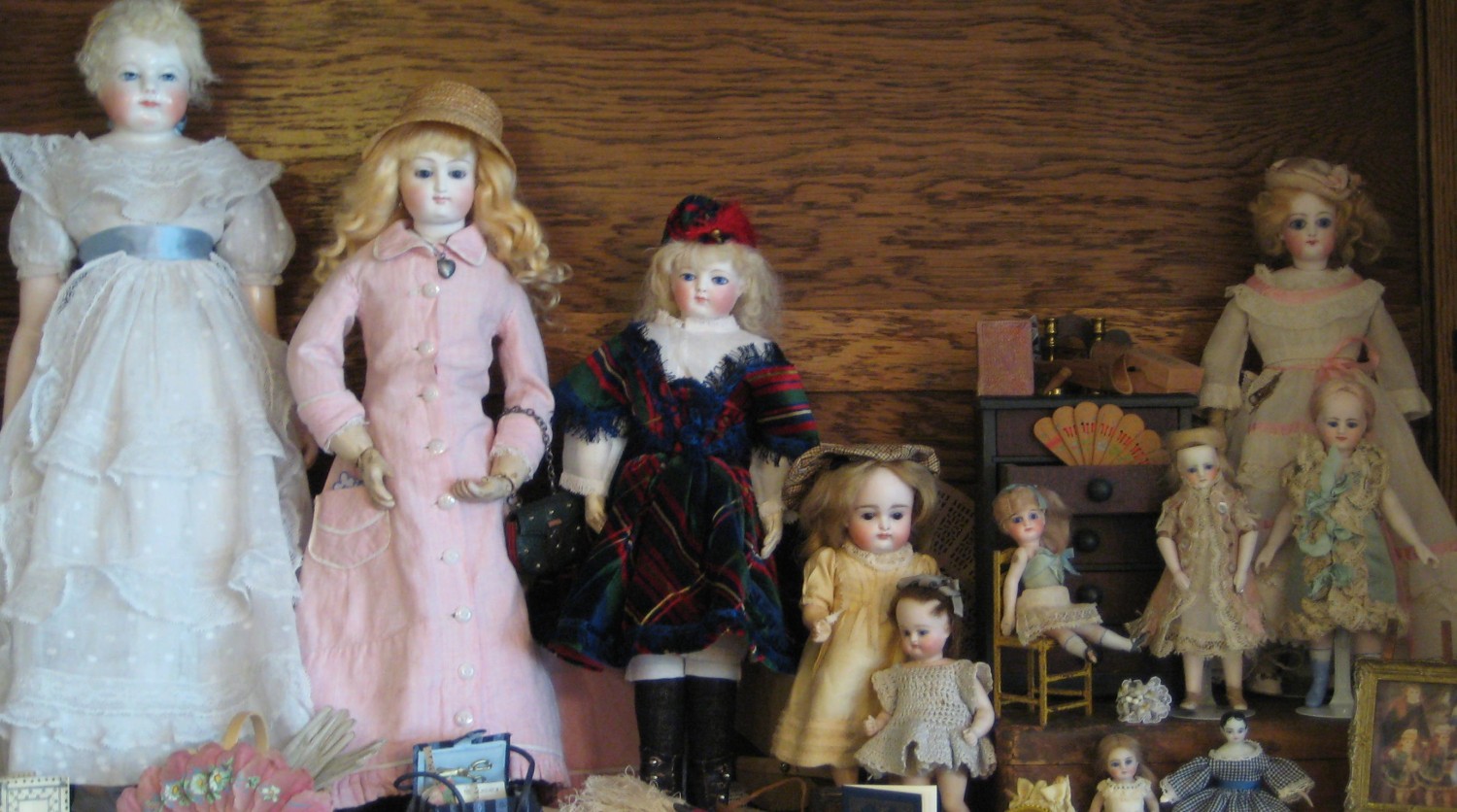For those of you who may not be familiar with the term, “cartridge pleating” is used to fit way too much fabric into a waistband. It creates a very full skirt.

Here’s my Huret wearing her new skirt with her embroidered wool jacket. Pretty cute, huh?

And here’s my Huret Book. It’s 3 1/2″ tall. Appropriately for a French doll, I bought it in Paris, in a stationer’s store in Montmartre.

It lives in my purse. In it, I list my Huret’s measurements and keep records of all the clothes I make for her. That way when, in my travels, I find something she needs I have all her particulars on hand.

Yesterday, I showed you how I made the waistband. This is how the skirt looks before I start the pleating. I have hemmed the fabric, lined the skirt, finished the back seam and opening, and ironed down 3/4″ at the top of the skirt. It is not necessary to finish the cut edge.

To eliminate a bit of bulk, I trimmed the lining where it was doubled over.
I threaded my needle with regular size 50 cotton thread, not the finer size 60 thread I normally use. The stronger thread is less likely to break when I pull the gathers. The thread needs to be cut longer than the amount of fabric to be gathered, in this case the skirt is 42″ around.

To sew, knot the end of the thread and make a line of even running stitches close to the fold. I was able to line the stitches up with the stripes to keep them even.

To stitch faster, hold the needle between your thumb and pointer finger near its very end and load your needle with as many stitches at at time as you can. The less time you spend pulling the thread through, the quicker you will sew.

After you have completed the first line of running stitches, start a new thread and run another line of stitches parallel to and just below the first line. To create tiny pleats, the second line of stitches must line up exactly with the first line of stitches. Each stitch is made directly below a stitch in the top row.

Once you have stitched two parallel lines of running stitches, gather the fabric into pleats, fit it to your waistband and knot the ends of the gathering threads. I pinned my waistband to the skirt, right sides together. To sew, I made a tiny stitch into the waistband and into the top of each pleat.

This shows the magic of cartridge pleating. Most of the fabric is behind the waistband.

When I was done stitching, I turned the waistband up. Notice how I made it so the the top of each pleat is the BLUE stripe.
There are a few things to look out for when creating cartridge pleats.
- The trickiest part of cartridge pleating is deciding just how far apart to make the stitches. I do not have a magic formula for you. It will vary with the weight and stiffness of the fabric and the size of the garment. After a while, you will be better able to guess, but sometimes you will just have to start over to get it right. For one of my Huret’s petticoats, I started over 3 times.
- Make sure that you catch the top of every pleat as you stitch. Sometimes, when the gathers are very tight, it is easy to miss a stitch or two. If you do, just go back and fix any missed stitches.
- Do not remove the gathering threads. It will look messy. I know. I tried it once and had to start over.
I am pleased with my Huret’s new skirt. But I made it a bit shorter than any of her petticoats, so she’ll need a new petticoat. And she doesn’t have any panties. Or a chemise. And her one antique blouse doesn’t fit very well.
So I know what my next projects will be…
If anything in my Tutorials is not clear, or if you have a different/better way of doing something, please send me a Comment. Or just write me to say, “Hi”. I love hearing from you.


Hi, dear Emily, what you do and share is really great!
Hi, See you Saturday.
Thank you for the excellent demonstration of cartridge pleats! Very helpful!
Pingback: Roll, Whip & Gather & Gather - My Doll's Trousseau
Do you have a chemisette pattern
I do not. Sorry.